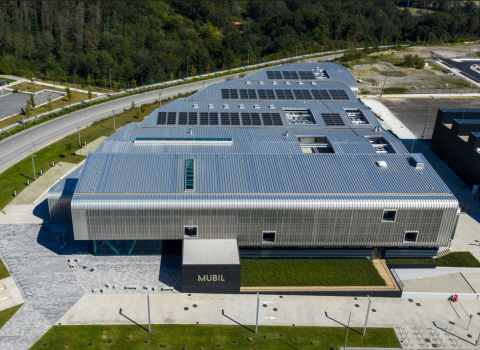Green hydrogen is to be used as an emission-free energy carrier on a large scale as soon as possible. In order to enable this goal, materials and components, e.g. for fittings, seals, distribution pipelines and hydrogen filling stations, must be carefully tested for their suitability and safety. For this purpose, the Bundesanstalt für Materialforschung und -prüfung (BAM) is developing an innovative testing method that should significantly accelerate the market ramp-up of hydrogen.
Germany has more than 500,000 kilometres of natural gas pipelines that provide energy to industry and households. This infrastructure plays a central role in the transition to a hydrogen economy in which natural gas will be gradually replaced with up to 100 percent hydrogen, fed into the existing distribution pipelines. This network can also serve as a storage facility for the energy carrier. In addition, the construction of new hydrogen pipelines is planned and therefore must be tested.
In order to achieve these goals important safety issues must be clarified; pipelines, seals and distribution stations, some of which are decades old, must be tested if they are at all suitable for the transportation of pure hydrogen.
In principle, hydrogen can be transported in a similar way to natural gas; however, the atoms are particularly small and can be easily absorbed in metals. In the case of steels, for example, as they are commonly used as structural materials in this infrastructure, the uptake of hydrogen can lead to a degradation of the material properties. Under mechanical stresses, as they occur in every gas network, this can promote the formation of cracks and may lead to dangerous leaks.
In order to test pipeline steels for degradation, material samples have so far been subjected to elaborate tests: They are exposed to hydrogen in an autoclave and mechanically stressed in the process. "Because of the large amount of hydrogen required, such tests require a high level of safety and are correspondingly expensive. This hinders a rapid expansion of testing capacities as they will be needed in the coming years," explains Florian Konert, scientist at the Hydrogen Competence Centre H2Safety@BAM.
The engineer and the team are working on a testing technique that will make it much easier to show possible damage in the future - at lower cost. In the process, a steel sample is filled with hydrogen from the inside and simultaneously subjected to a mechanical tensile load. The method requires only a fraction of the amount of hydrogen in comparison to the existing method, which significantly reduces the safety-related issues. "We are convinced that our approach will expand the existing testing possibilities and thus enable a faster market ramp-up of hydrogen," says Konert's colleague Jonathan Nietzke, also a scientist at BAM's Hydrogen Competence Centre. With their innovative testing technique, the two researchers want to create a ranking of materials according to their suitability for hydrogen use, including pipeline materials in the natural gas distribution network. The results can provide companies that operate gas networks or that manufacture components for the hydrogen economy with an important basis for assessing materials and thus accelerate the retrofitting of existing plants or the construction of new ones.
This article was first published on 27 July by BAM.





 A unique international forum for public research organisations and companies to connect their external engagement with strategic interests around their R&D system.
A unique international forum for public research organisations and companies to connect their external engagement with strategic interests around their R&D system.